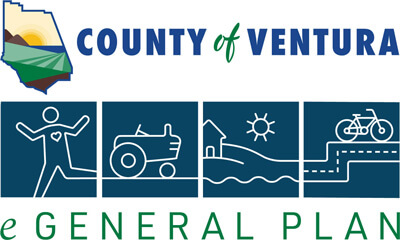
Economic Vitality
Economic vitality in Ventura County incorporates both economic advancement and quality of life, addressing both local and regional market demand, and planning for a future that reflects the needs and vision of Ventura County while enhancing social equity and economic opportunity. This includes channeling economic activity in such a way that it meets market needs while focusing urbanized development into the cities and preserving the open space and agricultural resources of the unincorporated area.
Ventura County’s economy is diverse, offering specific strengths in agriculture, manufacturing, health care, retail trade, hospitality, and public administration. These industries are where Ventura County has large concentrations of employment. However, economic growth and the distribution of economic benefits have not kept pace with other areas in the Southern California region or state. County economic activity totaled over $51.4 billion in 2017, which represents a compounded annual growth rate (CAGR) of 1.3 percent since 2007. This is considerably slower than the state economy, which had a CAGR of 2.1 percent during this period. In part, this is because some of Ventura County’s larger economic sectors, such as financial services and construction, were particularly hard hit in the most recent recession (2007 – 2009). In addition, other large county economic sectors have experienced slower long-term growth, such as agriculture and manufacturing.
The economic development challenge is to ensure that traditional employment sectors such as agriculture, manufacturing, retail, and construction can remain vibrant in the face of substantial cost pressures, changing consumer demands, and global competition. At the same time, it is important to encourage new types of businesses that reflect current technological and market opportunities and that are also aligned with the skills and creative abilities of the workforce. The Economic Vitality Element includes goals, policies, and programs intended to help retain and expand existing economic sectors, to help diversify the economy by developing new kinds of businesses, and to help improve economic resiliency.
While job opportunities will derive from the local and regional economy, economic vitality also depends on ensuring that the economic foundations that support prosperity remain robust. Water is essential to maintaining the viability of agriculture in the county and the transportation system is critical to move both goods and workers. Moreover, with aggressive renewable energy mandates in California and expanded public and private investments, Ventura County will need to ensure that its land use policies accommodate those investments and requirements. In addition, business today depends on ever increasing broadband capacities and speeds. The need for broadband is pervasive and is as critical to modern health care, one of the County’s largest job growth sectors, as it is to conventional technology sectors and emerging areas such as “Smart City” initiatives. These types of facilities and investments are critical foundations for economic prosperity.
The availability of affordable workforce housing is also an important foundation for economic vitality. The General Plan Housing Element addresses this need in detail, but from an economic development perspective, affordably priced workforce housing allows a full range of workers at all skill and experience levels to live and work in the community. The proximity of housing to job centers is an important consideration in reducing the costs and quality of life impacts associated with long commute times.
One of the county’s greatest assets is its workforce. Supportive housing and transportation policies help workers connect with employment opportunities. Workforce training is also a vital component for successful economic development. As technologies and skill requirements continue to evolve, both new and existing workers need access to education and training resources that can help the County remain a competitive location for business and job opportunities. In addition, investments in early childhood education can play a vital role in positioning our future workforce for success.
This Element includes references to the Economic Vitality Strategic Plan, which the County adopted in 2017. The Economic Vitality Strategic Plan provides a strategic framework for the County to achieve its long-term economic vitality goals. While the Economic Vitality Strategic Plan is likely to evolve during the lifetime of this General Plan, it is nonetheless the County’s primary implementation tool for this Element and for the County’s economic initiatives overall.
